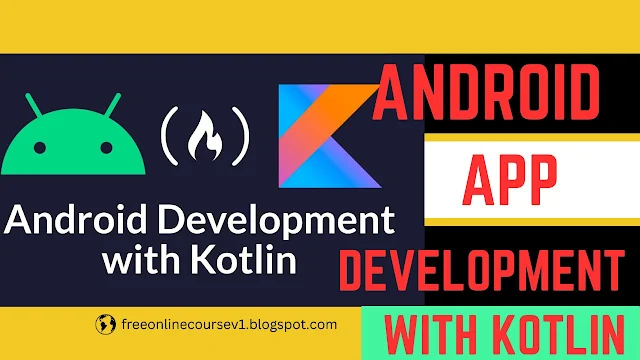Developing Android apps with Kotlin is a popular choice among developers due to its concise syntax and enhanced features. Here's a step-by-step guide to get you started with Android app development using Kotlin:
- Prerequisites:
1. Install Android Studio:
- Download and install Android Studio from the official website: [Android Studio Download](https://developer.android.com/studio).
2. Set Up Kotlin Plugin:
- Open Android Studio.
- Go to `Preferences` (on macOS) or `Settings` (on Windows/Linux).
- Navigate to `Plugins` and search for "Kotlin."
- Install the Kotlin plugin if not already installed.
- Create a New Project:
1. Open Android Studio:
- Launch Android Studio and click on "Start a new Android Studio project."
2. Configure Your Project:
- Select "Empty Activity" or another template based on your project requirements.
- Choose the language as Kotlin.
3. Configure Project Details:
- Set a name for your project.
- Choose the package name.
- Select the save location for your project.
4. Finish Setup:
- Click "Finish" to create your project.
- Project Structure:
- `app/src/main/java`: Kotlin files for your app.
- `app/src/main/res`: Resources such as layouts, images, etc.
- `app/src/main/AndroidManifest.xml`: Configuration file for your app.
- Understanding Basic Components:
1. Activities:
- Entry points for your app.
- Defined in Kotlin files and declared in the manifest.
2. Layouts:
- XML files in `res/layout` that define the UI.
- Use the visual editor or code for designing.
- Kotlin Programming:
1. Syntax:
- Learn the basic syntax of Kotlin.
- Understand variables, data types, functions, and classes.
2. XML Layouts:
- Design your app's UI using XML in the `res/layout` folder.
- Utilize various UI elements like TextView, EditText, Button, etc.
3. Activity Lifecycle:
- Understand the lifecycle of an Android activity (onCreate, onStart, onResume, etc.).
4. Integrate Kotlin Code:
- Write Kotlin code in your activity files (`MainActivity.kt`, for example).
- Handle UI interactions, button clicks, etc.
5. Gradle Scripts:
- Familiarize yourself with `build.gradle` files for module and project-level configurations.
- Testing:
1. Unit Testing:
- Write unit tests for your Kotlin code.
2. Instrumented Testing:
- Create instrumented tests for UI components and interactions.
- Deployment:
1. Emulator:
- Test your app on the Android Emulator provided by Android Studio.
2. Physical Device:
- Connect a physical Android device for testing.
3. Build APK:
- Build a signed APK for distribution.
4. Google Play Store:
- Publish your app on the Google Play Store.
- Resources for Learning:
1. Official Documentation:
- Android Developers: [Android Developer Guide](https://developer.android.com/guide)
2. Online Courses:
- Platforms like Udacity, Coursera, and others offer Android development courses.
3. Community:
- Join online communities like Stack Overflow, Reddit, and Kotlin forums for help and discussions.
4. Sample Projects:
- Explore open-source Android projects on GitHub for practical learning.
HERE VIDEO TUTORIALS/COURSE: https://teraboxapp.com/s/1pBWznzVpOxJAbT5nDGHRZA
Remember, practice is crucial in becoming proficient. Start with small projects and gradually move on to more complex ones. Good luck with your Android app development journey!

